There’s something about the Cotswolds that just begs you to lace up your hiking boots. The hills rise and fall with pleasing softness, the panoramas are deep and the footpaths are many. A rolling view without a right of way is rare.
All of which makes it a deeply rewarding place to walk, especially when you factor in the legions of tearooms and country pubs. There are several multi-day options for lovers of long-distance trails – the Oxfordshire Way and the iconic Cotswold Way being just two – but here we’re focusing on some of the best short walks in the region.
This is a year-round walking destination, and trail signage is usually pretty good, but regardless of your plans it’s always sensible to have full route directions to hand. Bear in mind, too, that during the colder months – or after heavy rain – paths have a tendency to be muddy.
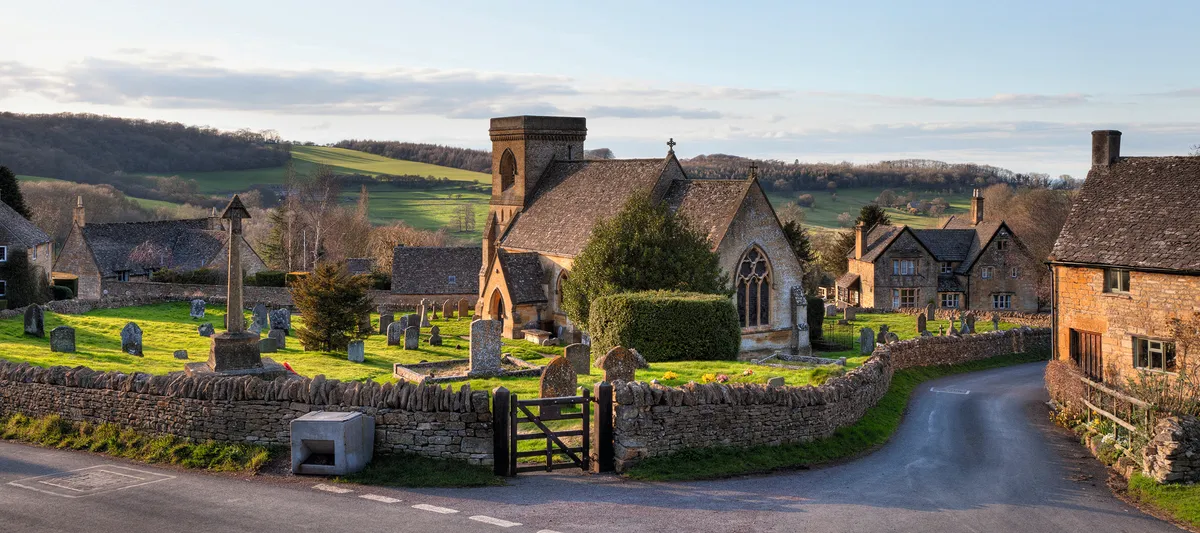
Where is the Cotswolds?
The Cotswolds is a vast landscape in southern England, spanning the counties of Gloucestershire and Oxfordshire, as well as parts of Worcestershire, Somerset, Warwickshire and Wiltshire. Covering almost 800 square miles, the Cotswolds was designated as an Area of Outstanding Natural Beauty (AONB) in 1966, making it the third largest protected area in England.
Walks in the Cotswolds
Castle Combe, Wiltshire
4.5 miles/7.2km | 3 hours | moderate
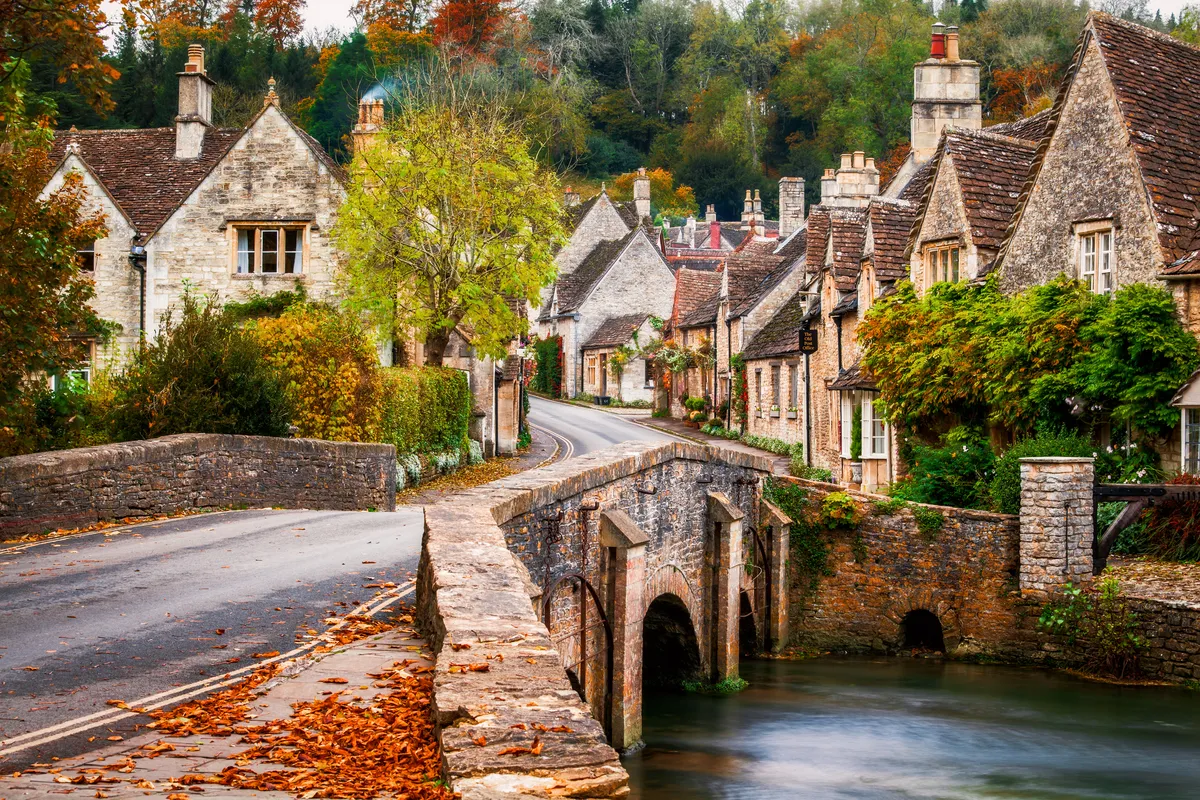
With its soft, golden Cotswold stone weavers’ cottages, medieval church and packhorse bridge, Castle Combe demonstrates all the credentials needed to play the quintessential sleepy English village in many films and TV series – from Dr Doolittle, Dick Turpin and Robin of Sherwood to the 2007 fantasy adventure film Stardust.
So it’s no surprise that producers chose the village as the backdrop to one of Agatha Christie’s most famous mysteries, The Murder of Roger Ackroyd. In this memorable episode, Poirot attempts to escape the wickedness of the city and retires to sleepy King’s Abbot (Castle Combe) to cultivate his garden and grow the perfect marrow. But Poirot’s peace is shattered when his friend Roger Ackroyd is killed and the great detective is drawn back into the world of murder and intrigue.
Cleeve Hill, Gloucestershire
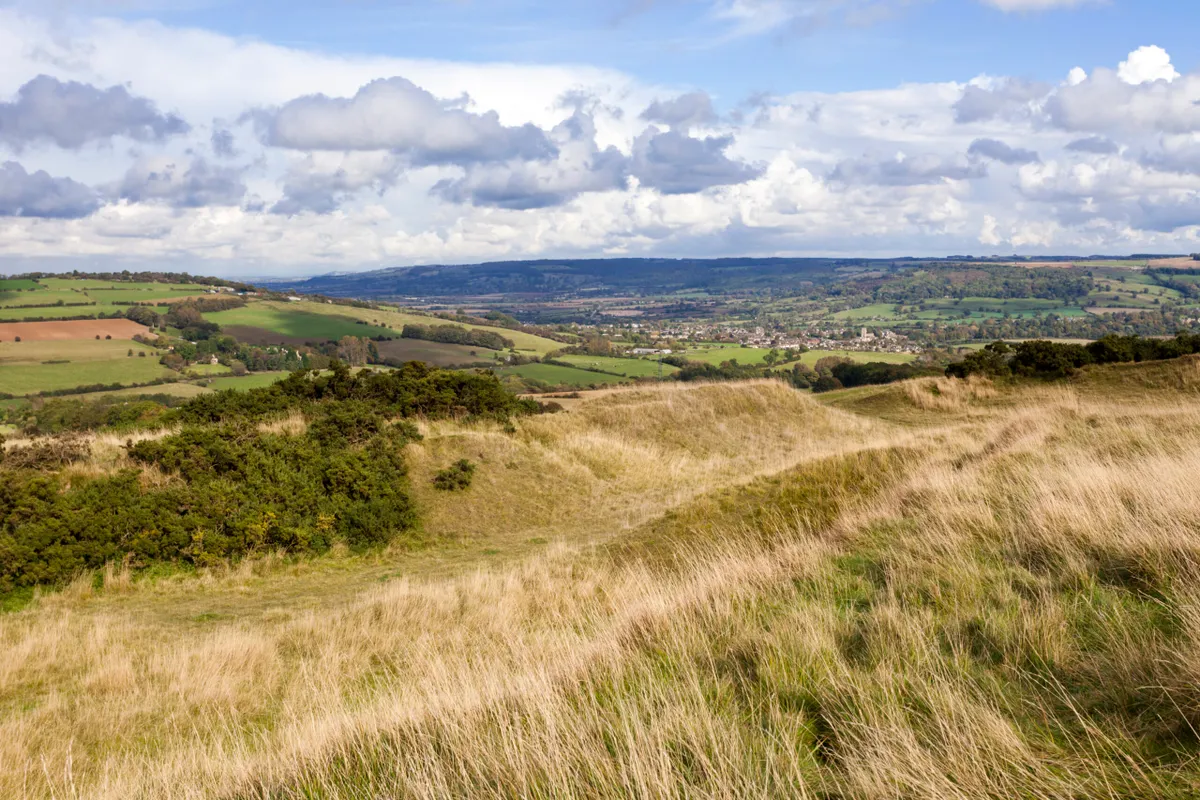
Not only is this spread of blustery heathland the highest point in Gloucestershire, it’s also the highest point in the whole of the Cotswolds. Cleeve Hill tops out at an altitude of 330 metres, a figure that sounds modest but belies the extraordinary vantage point it grants across Cheltenham (complete with famous racecourse), the Vale of Evesham and as far west as the Black Mountains.
This six-mile circular spends much of its time on Cleeve Common – which Cleeve Hill forms a part of – and makes good use of the Cotswold Way National Trail. The common itself is classed a Site of Special Scientific Interest, although part of it also plays home to a golf course, so keep your wits about you.
Broadway
5.2 miles/8.4km | 3.5 hours | moderate
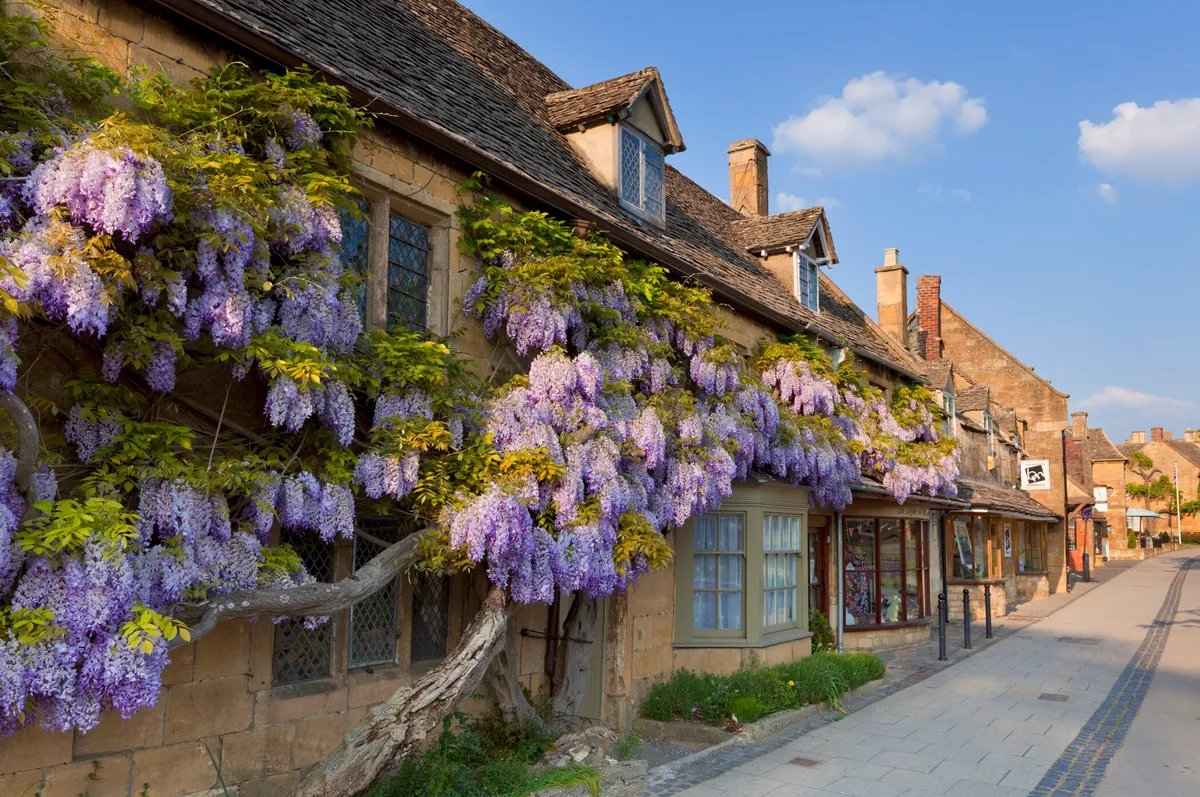
The picturesque village of Broadway, with its warm, honey-hued cottages, is the perfect base for a countryside stroll.
Take time to meander along the high street past pubs, cafés, tea rooms and shops – offering art and antiques, country clothing and gifts – then head into the Cotswold hills.
Bourton-on-the-Water, Gloucestershire
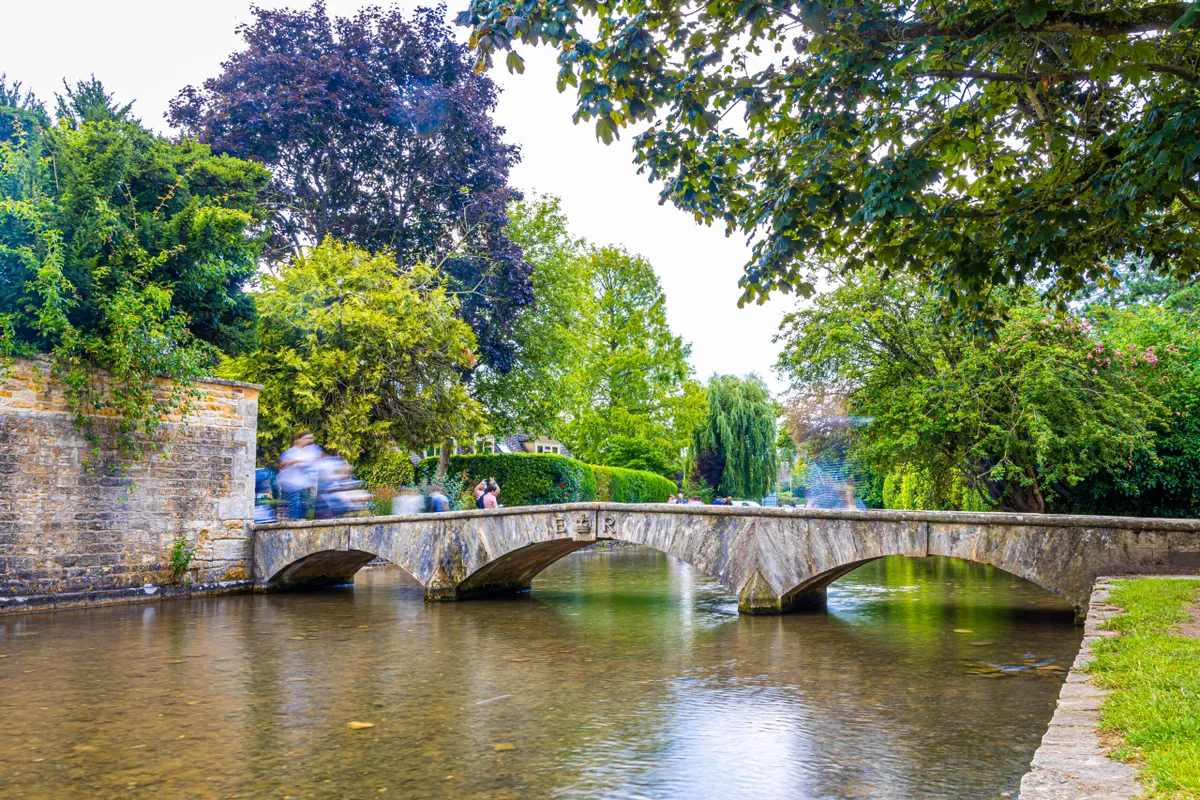
Pretty Bourton-on-the-Water is a classic visitor honeypot, with the River Windrush burbling through its centre and a steady supply of snap-happy tourists drawn by its bridges and tearooms.
This circular walk begins and ends in the heart of the village, letting you sample the so-called Venice of the Cotswolds, but the bulk of the route takes you through the lovely surrounding countryside. Over some 4.5 miles, you’ll head through Greystones Nature Reserve before reaching the peaceful hamlet of Wyck Rissington and looping back to the start point.
Dover’s Hill, Gloucestershire
3.7 miles/6 km | 2-3 hours | moderate
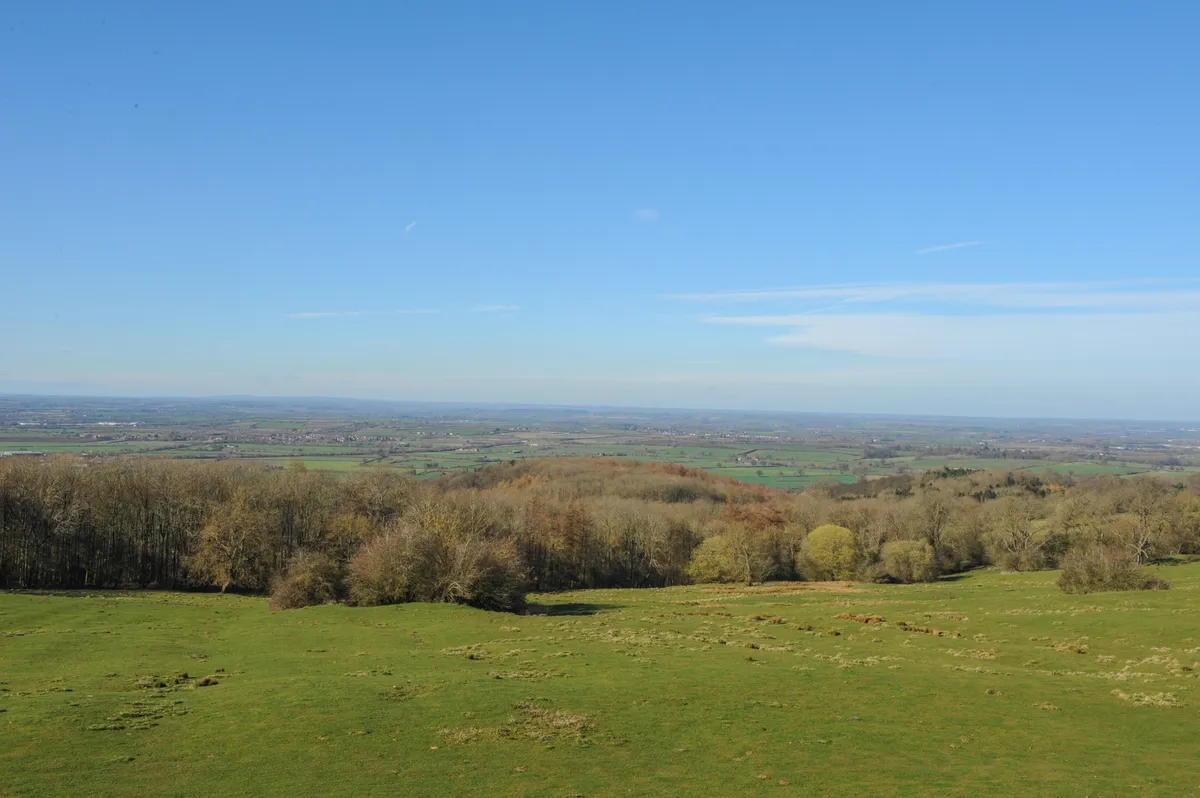
Dover's Hill is one of the highest points on the Cotswolds scarp. It is a breezy, knobbly, thistly hulk of a hill, gnawed by sheep and granting colossal views over the Vale of Evesham. It's also the home of the 'Cotswold Olimpick Games': an annual tournament of rural games that dates back to 1612, and is therefore older than the modern Olympics proper. Taking place at the summit, the Olimpicks includes events such as shin-kicking and tug-of-war.
Dover’s Hill is named after Robert Dover, the founder of the Games. A fine way to see it is on this (sometimes steep) National Trails-endorsed circular walk from Chipping Campden.
Windrush Valley, Oxfordshire
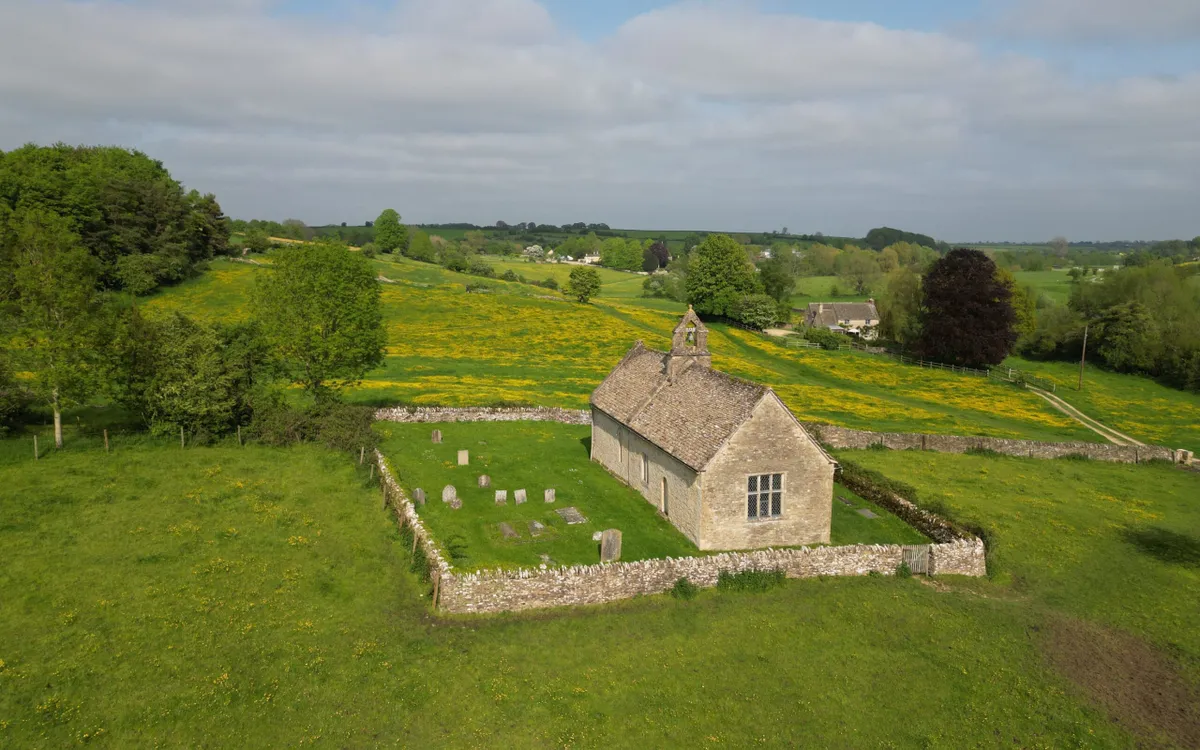
There’s much to enjoy about this walk, which leads from Swinbrook to Asthall in a quiet corner of the Oxfordshire Cotswolds. Years ago, David Cameron brought French president François Hollande to Swinbrook to experience an archetypal English village – complete with pub lunch at The Swan Inn – which says much about the area’s sleepy charms.
This circular walk uses a mixture of country roads and footpaths while packing in various points of interest, from a tiny 600-year-church to the family home of the notorious Mitford sisters.
Tyndale Monument, Gloucestershire
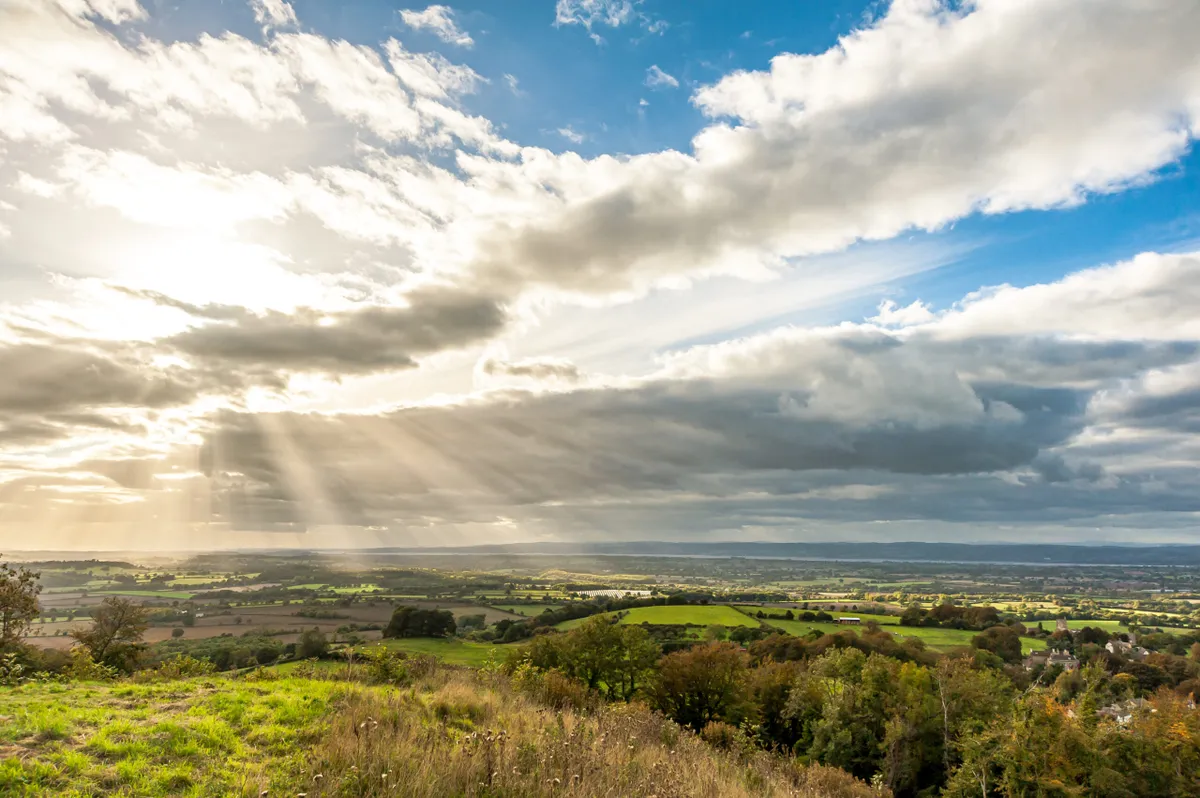
This varied hike gives a good overview of what makes the Cotswolds so enticing, with hilltop views, woodland trails and – as an added cultural bonus – a walk through a classic market town. Your goal on this out-and-back trail is the lofty Tyndale Monument, looking out across the distant Severn Estuary since 1866.
The route sticks to the Cotswold Way throughout, so navigation is straightforward and the paths are generally well maintained. The start and end point of Wotton-under-Edge, meanwhile, is one of the region’s more unsung settlements but has bags of wonky historical appeal. And dog-owners take note – the wide open spaces at the high-point of the route are perfect for a four-legged frolic.
Winchcombe, Gloucestershire
4.5 miles/7.2km | 3.5 hours | moderate
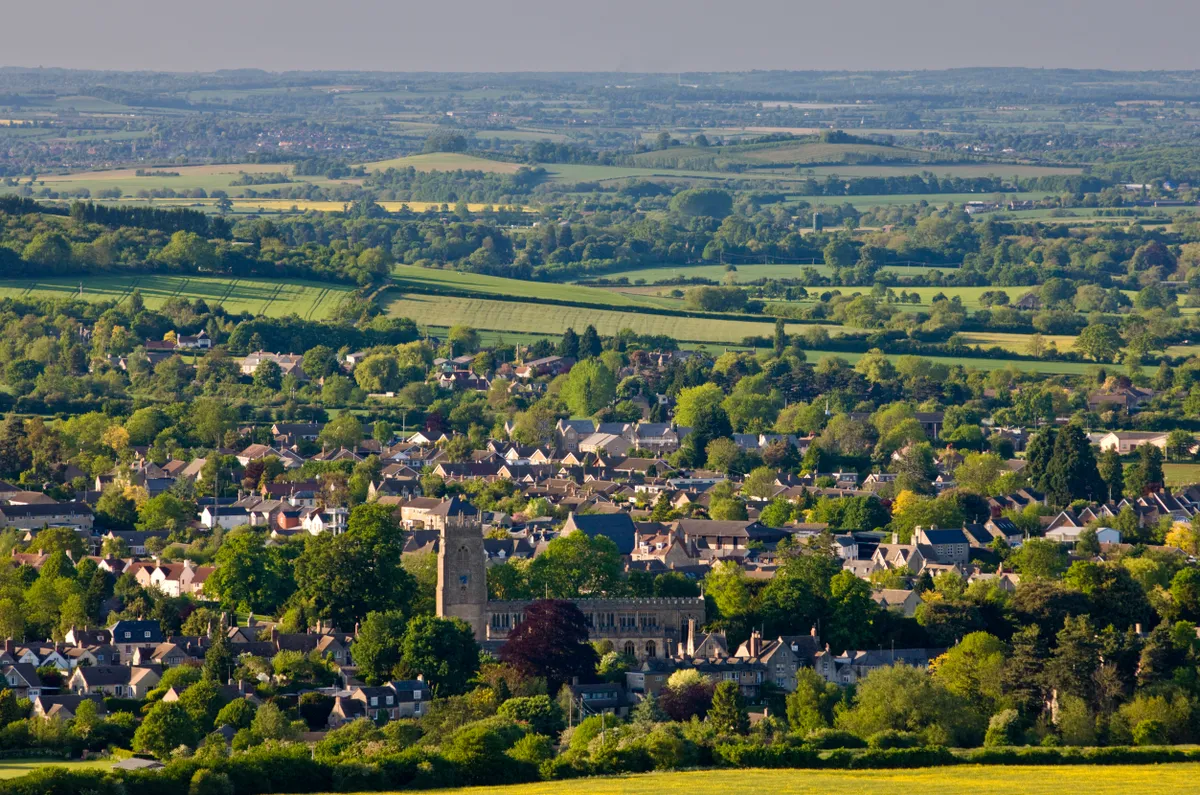
Prosperity is reflected in the buildings of Winchcombe, from the magnificent church with its array of alarmingly fierce gargoyles to the many grand merchants’ houses, mainly built out of warm, golden Cotswold stone.
It is a town that repays time spent wandering its streets, but for those needing something longer, it is also the perfect centre for country walking as it stands in the valley below the Cotswold escarpment. This is a walk that will take you back long before the Middle Ages to where rituals took place some 4,000 or more years ago.
Minchinhampton Common, Gloucestershire
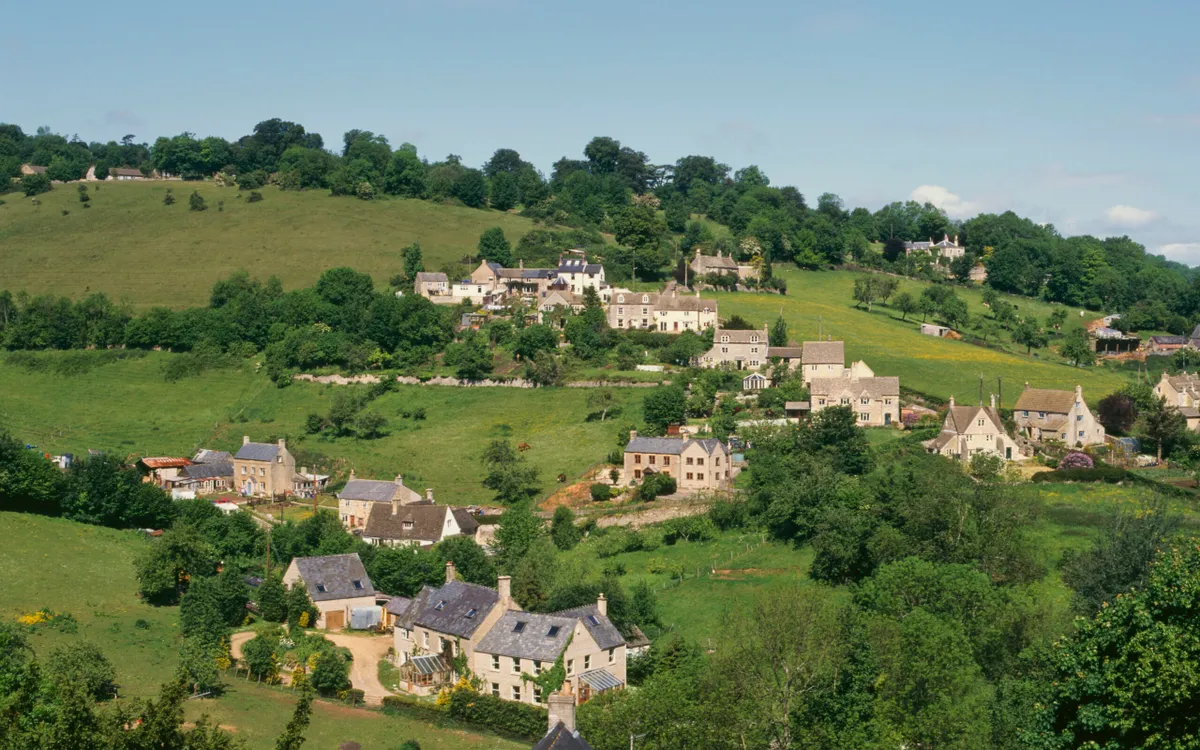
This is a bracing walk around Minchinhampton Common, a high, National Trust-owned expanse of grassland which has been designated as a Site of Special Scientific Interest.
It’s known for its springtime butterflies – including green hairstreak and the rare Duke of Burgundy – and summer orchids, but offers rewards year-round, not least wonderful views across the valleys below.
Much of the walk is exposed, making it a strong option for blowing the cobwebs away, while the presence of two pubs gives good opportunity to refuel.
Marshfield, Gloucestershire
7 miles/11.3km | 4 hours | moderate
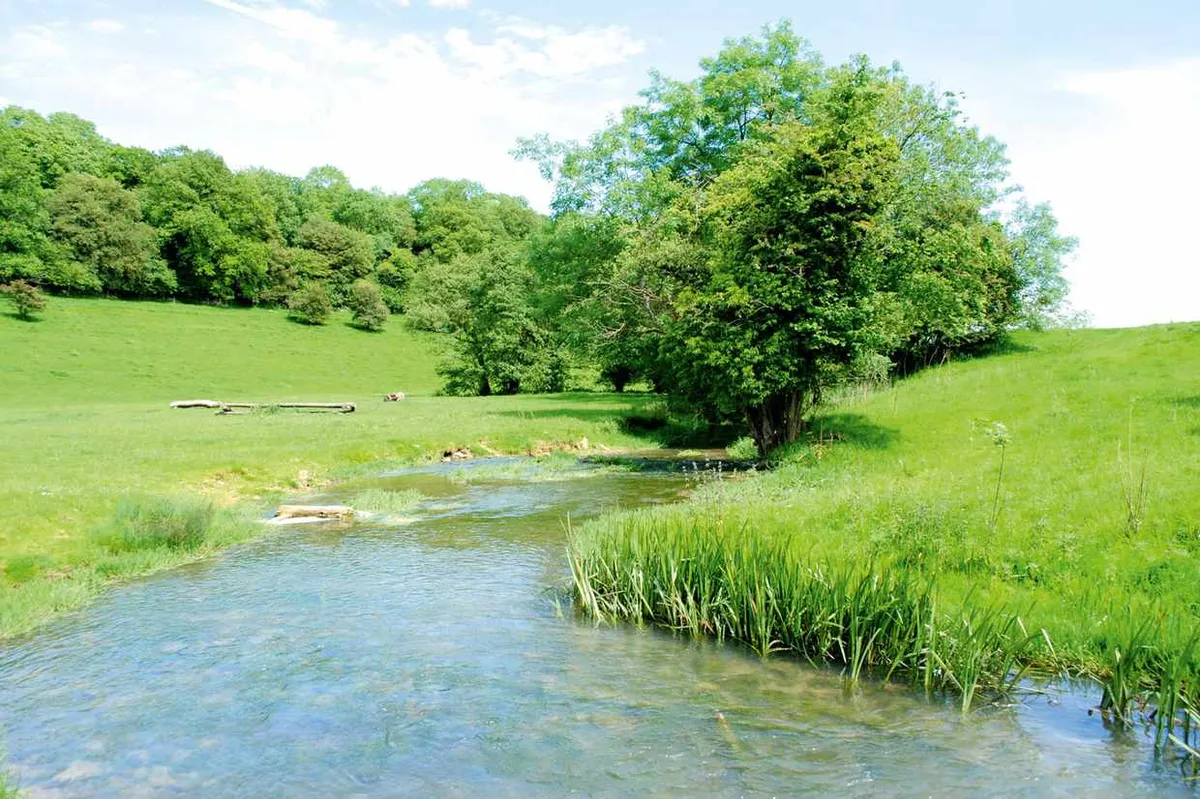
Most people think of the Cotswolds as being north of the M4 – those exquisitely charming honey-stoned towns and villages often clogged with visitors.
But there's a secret Cotswolds between the motorway and Bath – it’s just as beautiful but few people visit and it feels more authentic. So here is a taste of the Cotswold escarpment, a beguiling hamlet and a perfect lost valley.
Follow our seven-mile river and woodland walk starting in Marshfield in South Gloucestershire.
Wotton-under-Edge, Gloucestershire
4.4 miles/7km | 3 hours | moderate
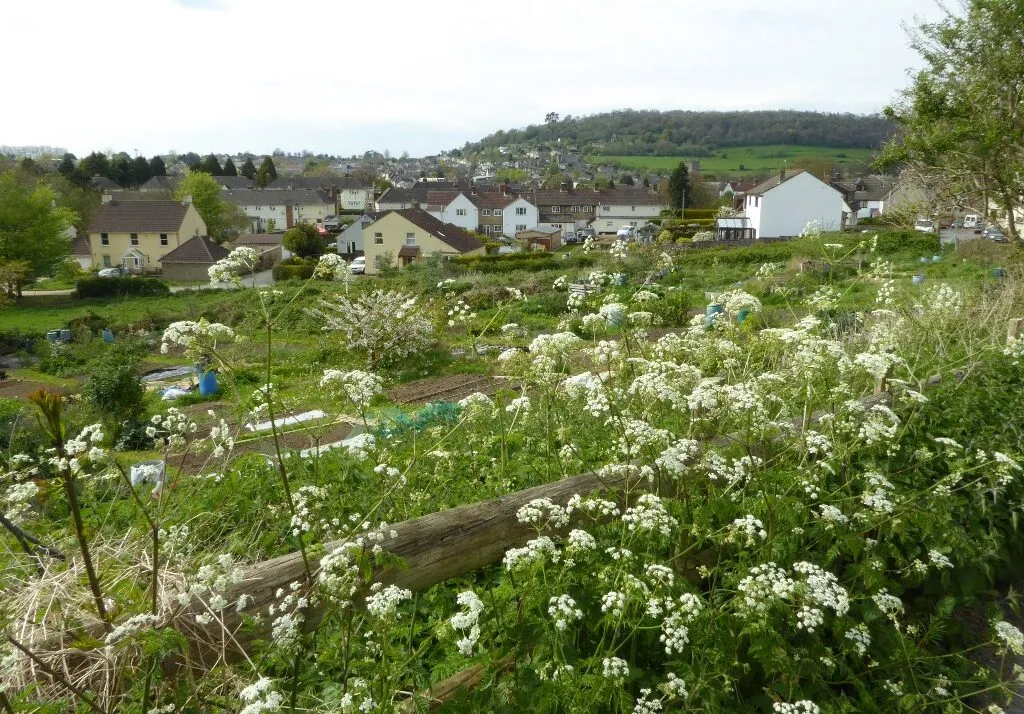
The market town of Wotton-under-Edge dates back to 940 AD, when it was known as Wudetun, Saxon for ‘the wooded town’.
The strange ditches found near the woods are remains of the Iron Age fort and can’t fail to stir the senses. This, combined with the hauntingly atmospheric Ancient Ram Inn, make this market town on the Cotswolds escarpment a fine setting for a hike.
Bradford-on-Avon to Bath, Wiltshire/Somerset
9.7 miles/15.6km | 5 hours | moderate

The Kennet and Avon Canal is a huge success story; over many years it has been transformed from a derelict, watery resting place for shopping trolleys into a leisure hub.
You can walk, cycle or hire a canoe or a barge to enjoy the canal’s stunning surroundings at your own pace, and there’s also an abundance of wildlife, good fishing and fine pubs along the way.
The beauty of this walk, from the pretty Wiltshire town of Bradford-on-Avon to the Georgian splendour of Bath in Somerset, is that you can tackle it however you please. Trains run regularly between Bath Spa and Bradford, so you can walk one way and get the train back, or if you’re driving, you could park the car at a point along the canal and then walk in whichever direction you choose.
Cooper's Hill, Gloucestershire
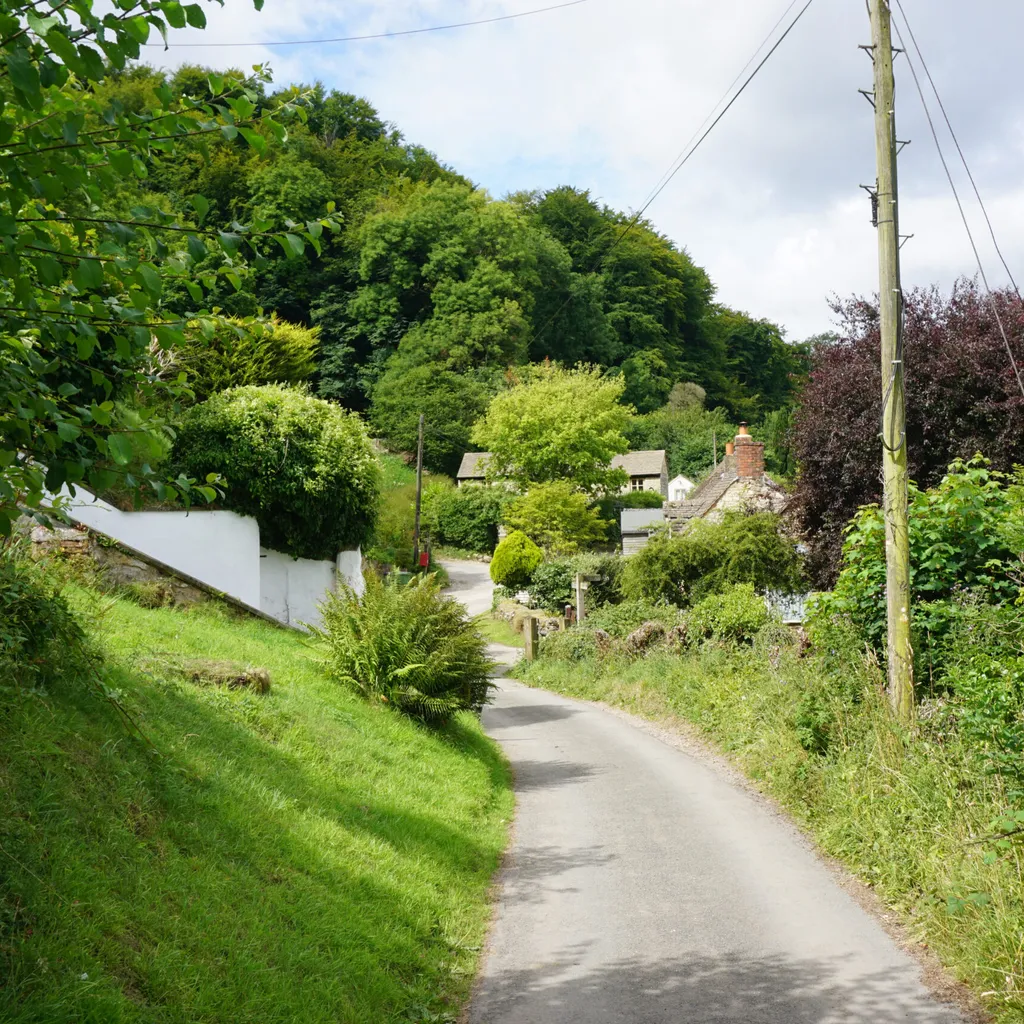
Woodland predominates on this enjoyable Gloucestershire loop-walk, although the star attraction is the steep grassy slope encountered midway along the route. Cooper's Hill is best known for its Spring Bank Holiday shenanigans, when thrill-seekers hurtle down its banks in pursuit of a giant wheel of Double Gloucester cheese.
The eccentric custom, which dates back centuries, brings yearly commotion – and more than the occasional injury – to an otherwise peaceful swathe of wooded countryside.
Laurie Lee Wildlife Way, Gloucestershire
5 miles/ 8km | 3 hours | moderate
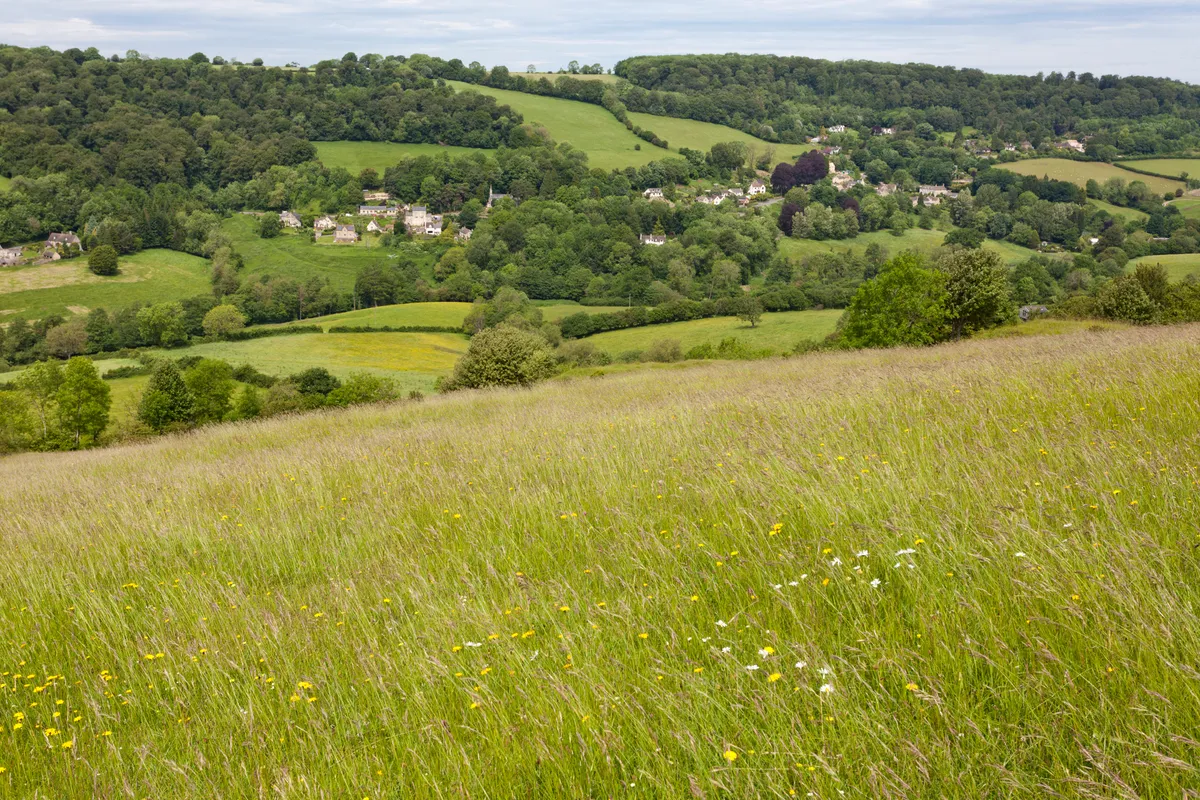
"The sides of the valley were rich in pasture and the crests heavily covered in beechwoods… For weeks on end the trees moved in the wind with a dry roaring that seemed a natural utterance of the landscape. In winter they ringed us with frozen spikes, and in summer they oozed over the lips of the hills like layers of thick green lava.”
The beech woods Laurie Lee describes so voluptuously in his childhood memoir Cider with Rosie still frame the Slad Valley, their lava-like appearance further enhanced when they erupt into flame-coloured hues in autumn.
They were Lee’s playground as a child, where he raced up and down the steep slopes and ate beech leaves – a “tight-folded salad of juices”. The woods are now linked by the Laurie Lee Wildlife Way, a five-mile circular trail opened in 2013 to mark the centenary of his birth.
